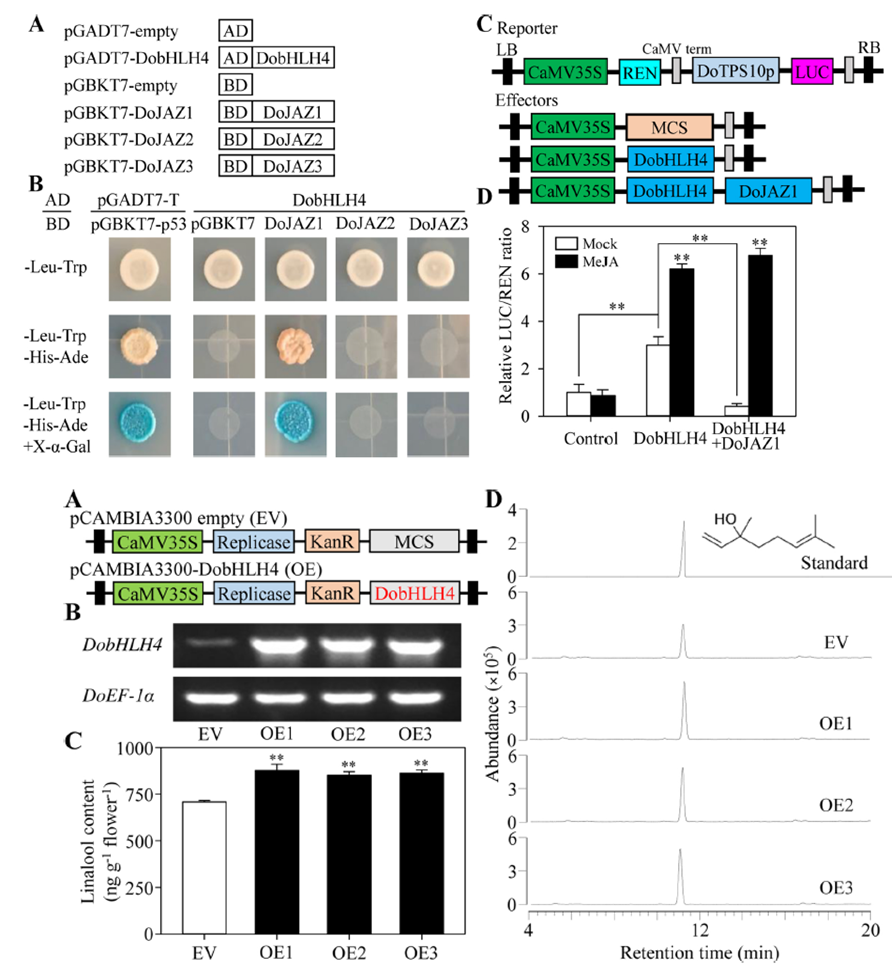
Orchid plants are the most species-rich plants and highly interact with pollinators via visual or olfactory cues. Floral scent, like color and shape, is a key ornamental trait that determines the quality and commercial value of orchids. Biosynthesis and emission of floral scent (e.g. linalool, geraniol) to the atmosphere facilitate the olfactory cues and ensure successful pollination. Economically important ornamental flower, Dendrobium officinale, is rich in monoterpenes, comprising linalool, geraniol and their derivatives. However, information on transcriptional regulation of terpene biosynthesis remains limited, and few studies have focused on monocot aromatic flowers.
Biotechnology Breeding Research Group reveals the chloroplast-localized DoTPS10 functioned as a linalool synthase based on evidence that it specifically catalyzed the heterologous production of linalool from GPP. Herein, DobHLH4 has been genome-widely mined. DobHLH4 during floral development was positively correlated with the DoTPS10 expression. Nuclear-targeted DobHLH4, a transcription activator, activates and directly binds to the DoTPS10 promoter. Transient overexpression of DobHLH4 in D. officinale petals increased significantly linalool accumulation, and concomitantly upregulated the expression of linalool synthetic genes, comparing DoHMGS, DoHMGR, DoMVD DoIDI, DoDXS, DoHDR, DoGPPS and DoTPS10. MeJA-inducible DobHLH4 was transcriptionally silenced as a result of physically interact with DoJAZ1, but MeJA reversed DoJAZ1-mediated silencing and stimulate DobHLH4 transcription. Therefore, JA-inducible DobHLH4 functions as a positive regulator of the formation of linalool by modulating DoTPS10 expression.
Based on this, a hypothetical model is illustrated that JA-activated DobHLH4 functions in the accumulation of linalool. In the absence of JA or low JA, DobHLH4 interacts with DoJAZ1 without targeting DoTPS10, which attenuates the transcriptional activation activity of DobHLH4 at the DoTPS10 promoter, thereby decreasing linalool accumulation. In the presence of JA, DobHLH4 is recognized by SCFCOI1 (the JA receptor) and subsequently degraded by the 26S proteasome. DobHLH4 is then released and activates the DoTPS10 promoter, thereby enhancing the accumulation of linalool. These results broaden researchers’ understanding of the molecular regulation of terpene accumulation, and may provide a potential target for advancing the bioengineering of enhanced terpene production with obvious economic and industrial value in orchid plants.